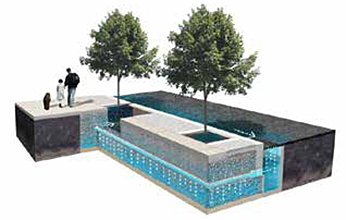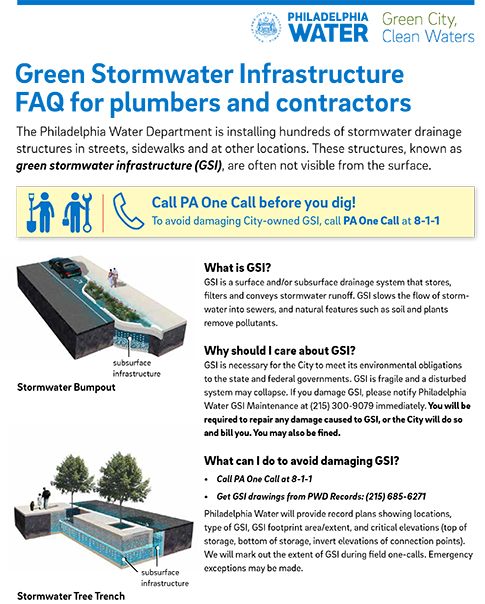We can't say it enough: Green City, Clean Waters represents a major shift in the way we think about and do infrastructure. That means the tools we use to effectively manage stormwater—collectively called Green Stormwater Infrastructure or GSI—look and work differently than the traditional pipes and sewers people are used to seeing.
One big difference is that these green tools have a much more noticeable presence in neighborhoods because they use things like trees, grasses, soil and stones on the surface to slow down water from storms that can overwhelm our sewers. In addition to managing stormwater, these green tools are also designed to have the same community benefits we get from having beautiful parks and gardens in our neighborhoods; in many cases, a stormwater tree trench or a rain garden can look pretty much just like your everyday street tree or landscaped garden.
That tendency to blend in can be misleading though, because GSI can be sort of like an iceberg: we see the green tip of it on the sidewalk, in a park or on the street, but the bulk of the infrastructure is spread out over a large area underground.
This diagram of typical street tree trench is a good example:

A diagram of a typical street tree designed by Philadelphia Water.
Because GSI is a relatively new concept, even plumbers and construction contractors aren't always aware of its presence or don't realize how much is going on below the surface. That can lead to costly mistakes that could damage Green City, Clean Waters infrastructure and hurt a neighborhood's ability to manage stormwater.
To avoid accidentally damaging these important tools, we put together a simple FAQ for plumbers and contractors to help them understand how GSI works, what it looks like, and what they should do if they're working with or near Philadelphia Water's green infrastructure. Click on the image below to get a full-size copy of the GSI FAQ for plumbers and contractors, which includes important phone numbers and contact information. If you're a resident and think you see construction that's damaging green infrastructure in your neighborhood, this FAQ sheet could be useful for you too:
If you are involved with a community group that hosts zoning meetings or have other interactions with developers in your community, please feel free to share this helpful FAQ with them, especially if you know a project could impact nearby green infrastructure. With Green City, Clean Waters set to increase its footprint dramatically over the next two decades, it's more important than ever for the development community to understand how green tools work so we can all meet the goal of improving our water quality!
